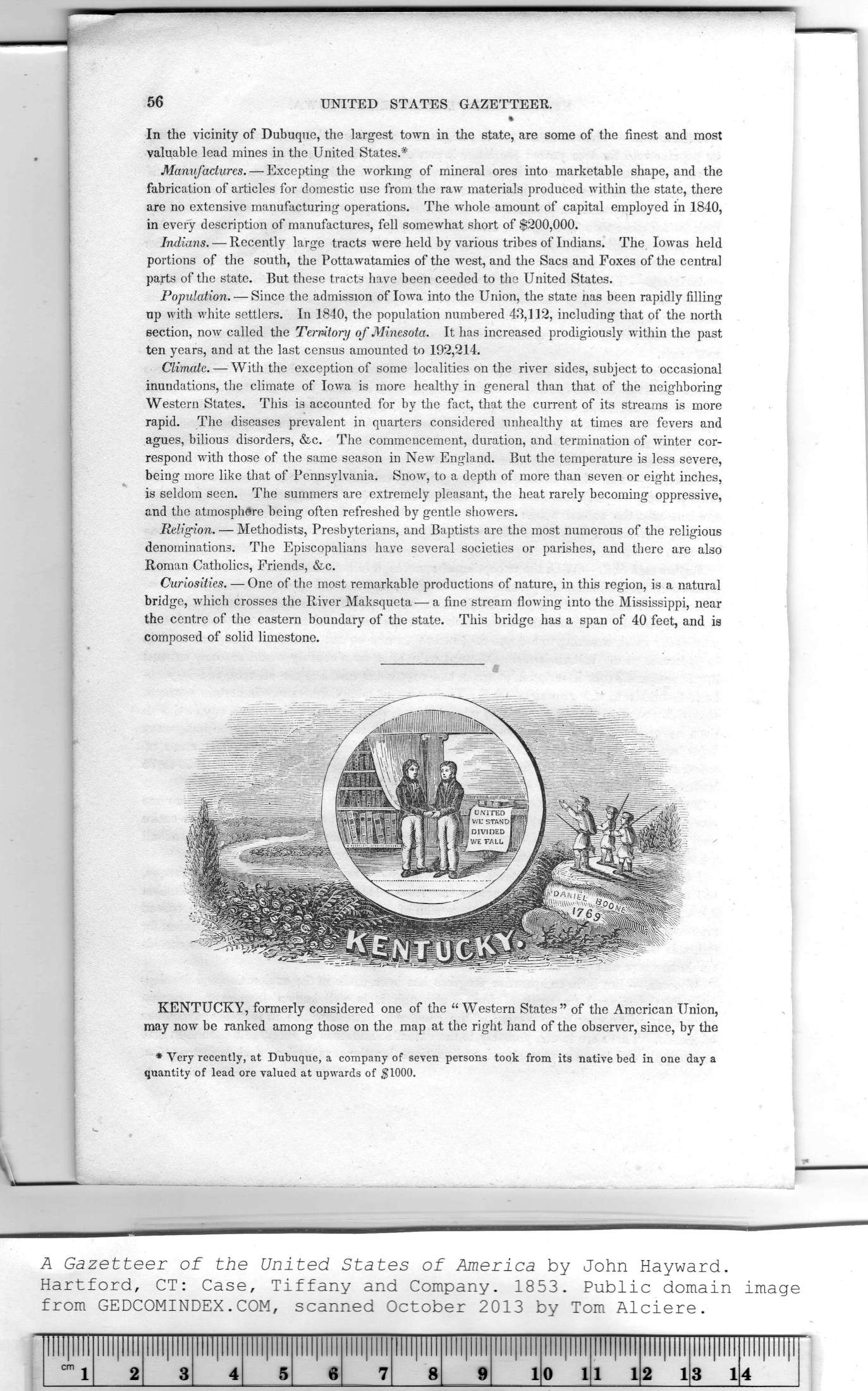|
|
Note: Ctrl and + increases the font size of the text below, Ctrl and - decreases it, and Ctrl and 0 resets it to default size.
56 UNITED STATES GAZETTEER.
%
In the vicinity of Dubuque, the largest town in the state, are some of the finest and most
valuable lead mines in the United States.*
Manufactures. — Excepting the working of mineral ores into marketable shape, and the
fabrication of articles for domestic use from the raw materials produced within the state, there
are no extensive manufacturing operations. The whole amount of capital employed in 1840,
in every description of manufactures, fell somewhat short of $200,000.
Indians. — Recently large tracts were held by various tribes of Indians. The Iowas held
portions of the south, the Pottawatamies of the west, and the Sacs and Foxes of the centra]
parts of the state. But these tracts have been ceeded to the United States.
Population. — Since the admission of Iowa into the Union, the state nas been rapidly filling
up with white settlers. In 1840, the population numbered 43,112, including that of the north
section, now called the Territory of Minesota. It has increased prodigiously within the past
ten years, and at the last census amounted to 192,214.
Climate. — With the exception of some localities on the river sides, subject to occasional
inundations, the climate of Iowa is more healthy in general than that of the neighboring
Western States. This is accounted for by the fact, that the current of its streams is more
rapid. The diseases prevalent in quarters considered unhealthy at times are fevers and
agues, bilious disorders, &c. The commencement, duration, and termination of winter cor-
respond with those of the same season in New England. But the temperature is less severe,
being more like that of Pennsylvania. Snow, to a depth of more than seven or eight inches,
is seldom seen. The summers are extremely pleasant, the heat rarely becoming oppressive,
and the atmosphere being often refreshed by gentle showers.
Religion. — Methodists, Presbyterians, and Baptists are the most numerous of the religious
denominations. The Episcopalians have several societies or parishes, and there are also
Roman Catholics, Friends, &c.
Curiosities. — One of the most remarkable productions of nature, in this region, is a natural
bridge, which crosses the River Maksqueta — a fine stream flowing into the Mississippi, near
the centre of the eastern boundary of the state. This bridge has a span of 40 feet, and is
composed of solid limestone.
KENTUCKY, formerly considered one of the “Western States" of the American Union,
may now be ranked among those on the map at the right hand of the observer, since, by the
* Very recently, at Dubuque, a company of seven persons took from its native bed in one day a
quantity of lead ore valued at upwards of $1000.
|
